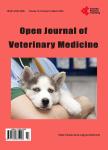Newcastle Disease Virus Isolation and Its Prevalence in Uganda Poultry Farms
Newcastle Disease Virus Isolation and Its Prevalence in Uganda Poultry Farms作者机构:Central Diagnostic Laboratory Department of Pharmacy Clinics and Comparative Medicine College of Veterinary Medicine Animal Resources and Biosecurity Makerere University Kampala Uganda entral Diagnostic Laboratory Department of Pharmacy Clinics and Comparative Medicine College of Veterinary Medicine Animal Resources and Biosecurity Makerere University Kampala Uganda Indian Veterinary Research Institute (IVRI) Central Avian Research Institute (CARI) Izatnagar India
出 版 物:《Open Journal of Veterinary Medicine》 (兽医学(英文))
年 卷 期:2014年第4卷第1期
页 面:1-5页
学科分类:1002[医学-临床医学] 100214[医学-肿瘤学] 10[医学]
主 题:Newcastle Disease Virus Chicken Embryo Virus Isolation Poultry Farmers in Uganda Avain Viruses in Africa Animal Production Challenges
摘 要:The present research work was carried out to isolate and identify Newcastle disease virus (NDV) by using haemagglutination inhibition (HI) test and HA-HI virus isolation, embryonated eggs (EE) and chicken embryo fibroblasts (CEF). A total of 95 clinical (blood, tracheal and cloacal swabs) and post-mortem (brain, lung, colon and spleen) samples were collected from chickens of field outbreaks of suspected Newcastle disease virus (NDV). The HI and HA-HI were employed to detect NDV in tissue homogenates of all the clinical and post-mortem samples as well as laboratory samples (AF and ICF). Among the four different types of post-mortem samples, virus isolation rate was found to be low in body organs. In CEF cell culture system, the rate of virus isolation from all the aforesaid samples was found to be at 100% with the exception of serum samples;while in tracheal and cloacal swabs, it was at 90%;while in serum, it was at 10%, in all clinical cases. The isolation rate of NDV was higher in CEF culture system (66.7%) compared to that of avian embryos (33.3%). Samples were inoculated and the allantoic fluid (AF) of the dead embryos and the infected culture fluid (ICF) of the CEF were harvested at 24 to 96 hours of the post-infection, respectively, which revealed that the virulent strain of NDV is highly prevalent in the region. The prevalence of NDV was established at 1.1%, 2.1% and 4.2% using HA-HI, EE, and CEF methods. Rapid detection and identification of the virus are crucial for the effective control of the disease as conventional diagnostic methods such as virus isolation on embryonated eggs followed by serological identification in haemagglutination-inhibition test are laborious and time-consuming. The speed of the diagnosis can be considerably increased by using methods based on molecular biology, e.g. reverse transcription—polymerase chain reaction. However, the genetic variability of APMV-1 isolates should be considered carefully as the potential cause for false neg



